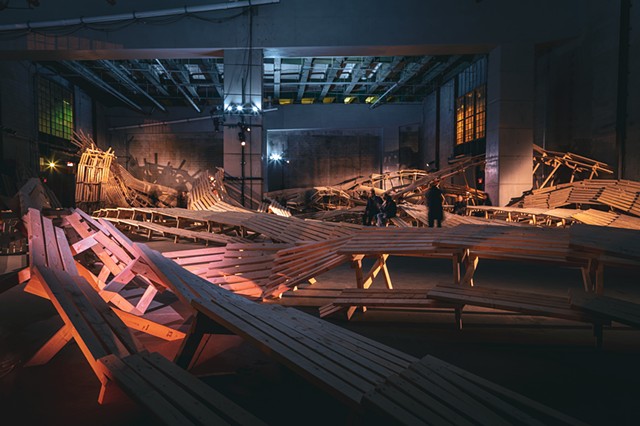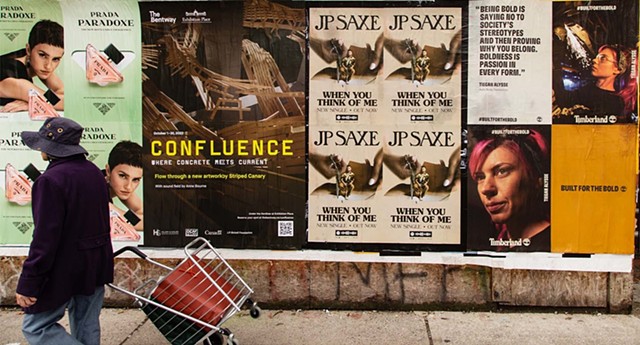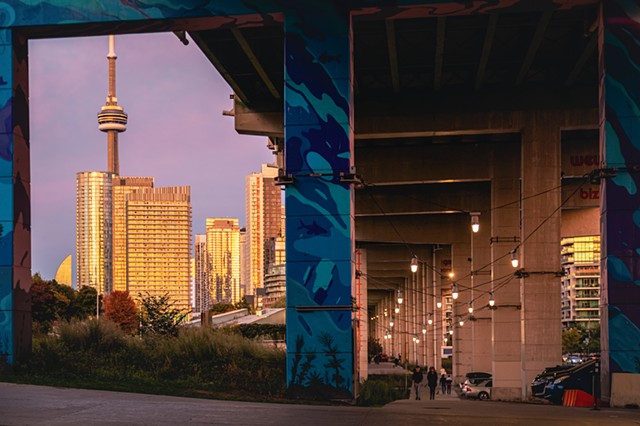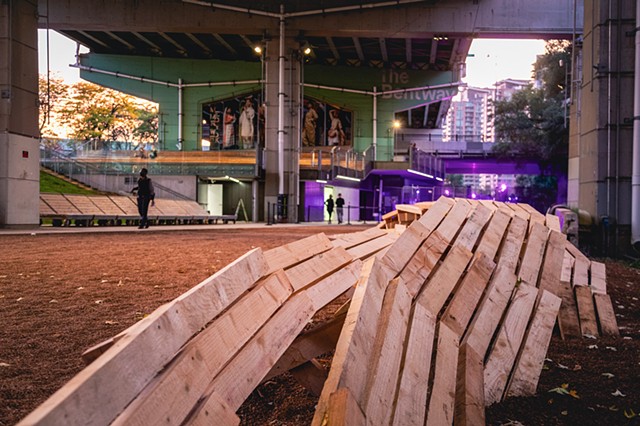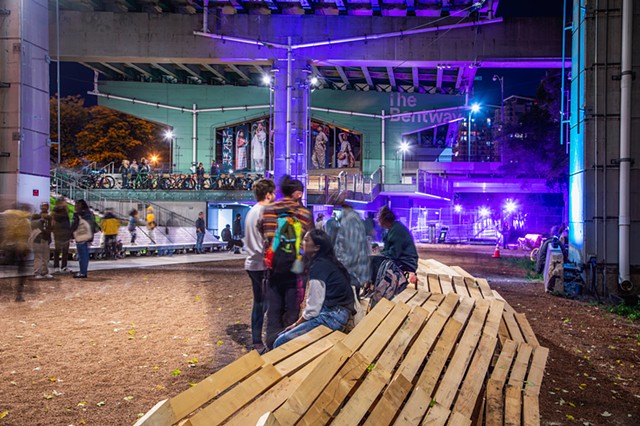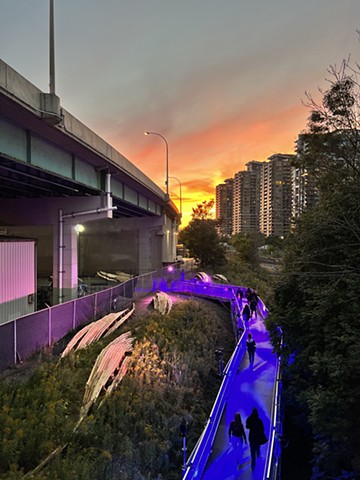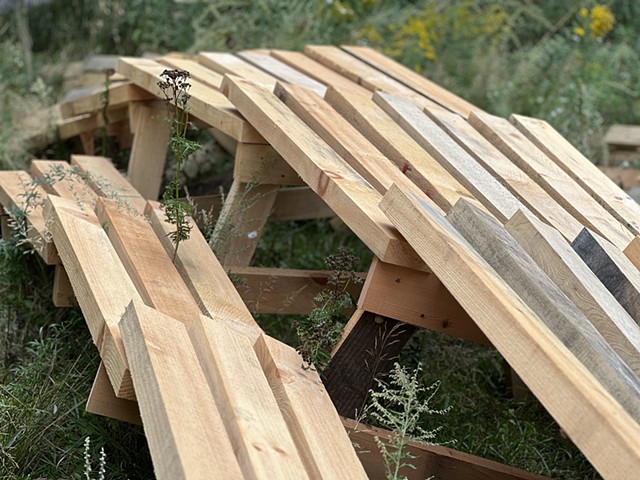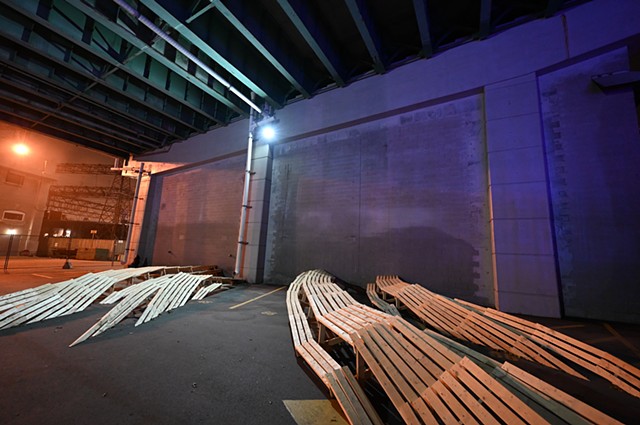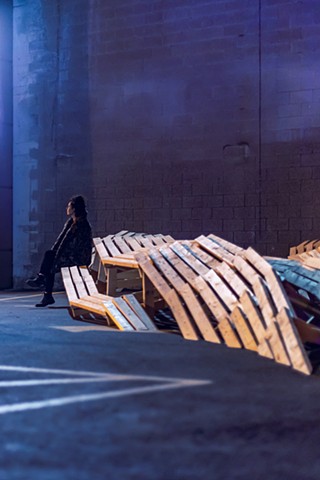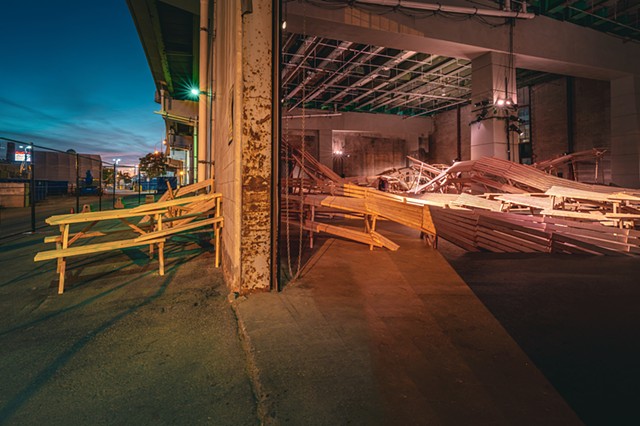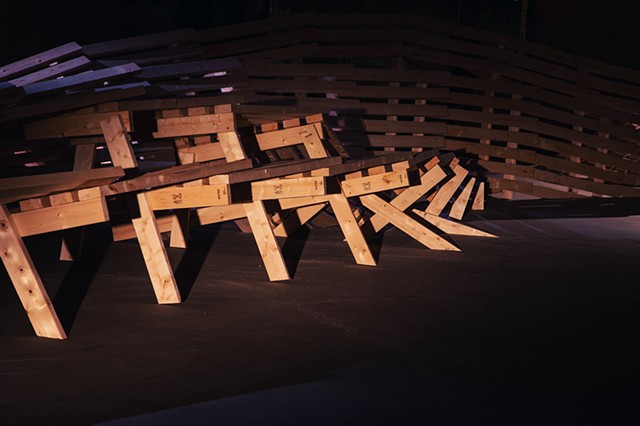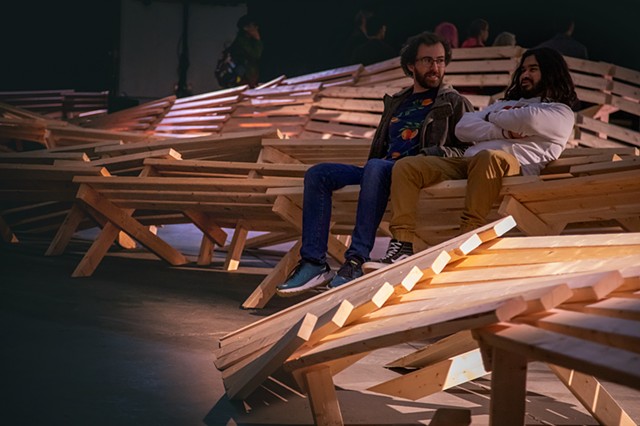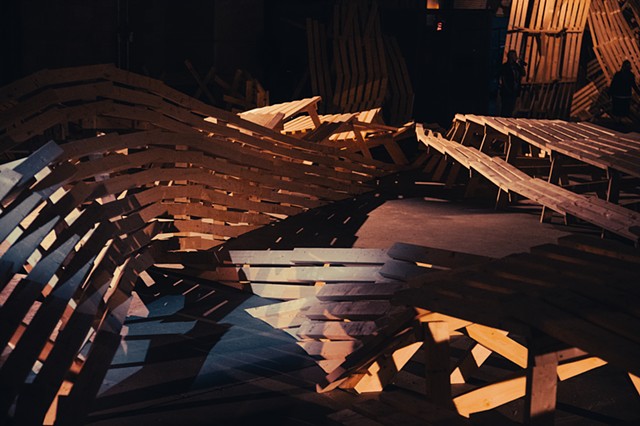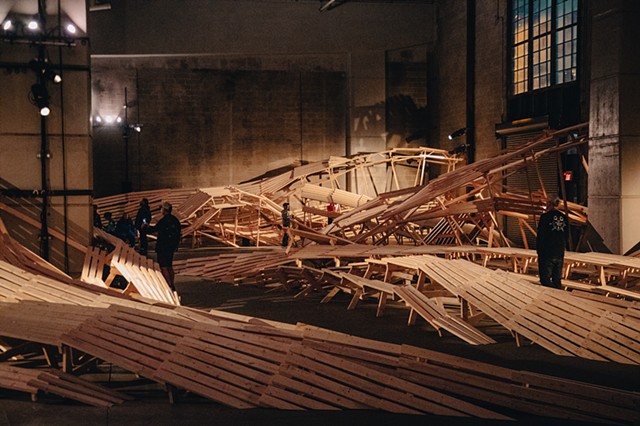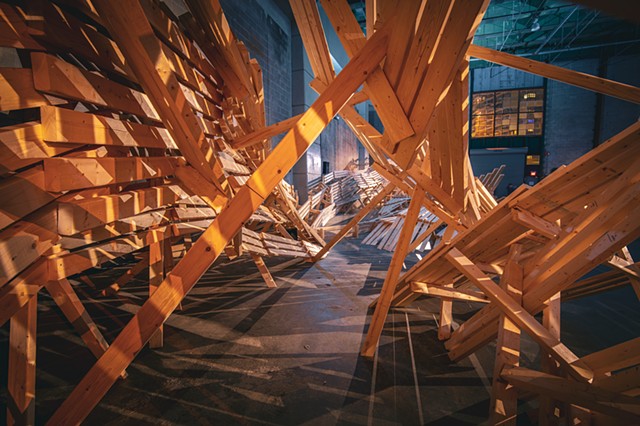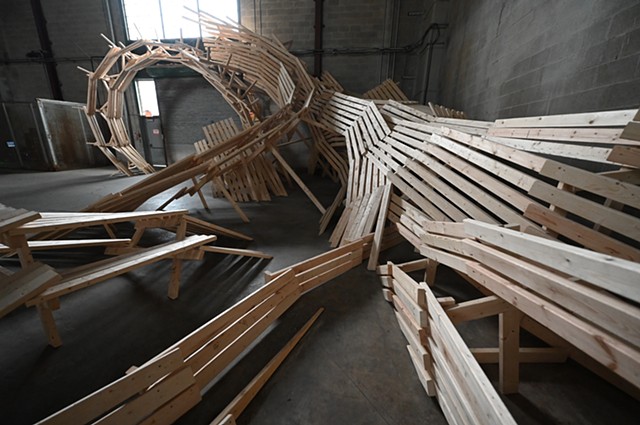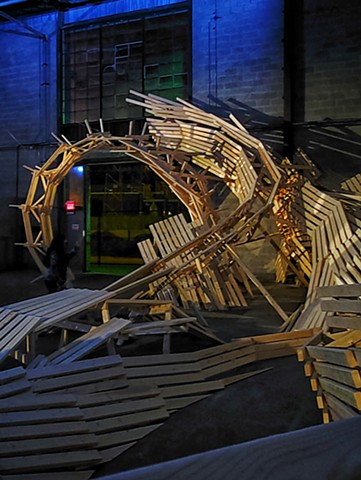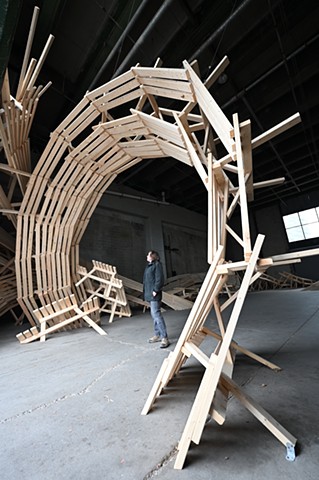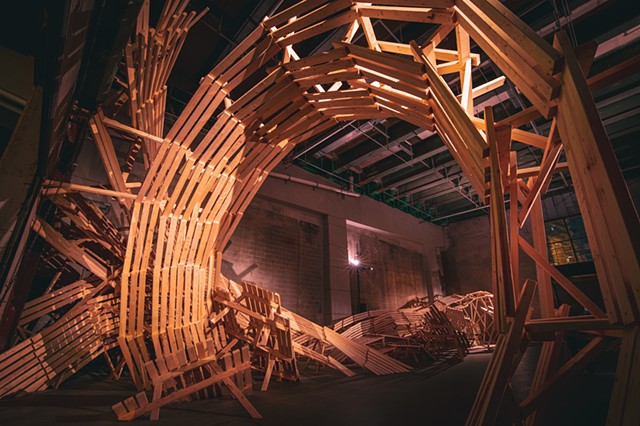Confluence
Confluence, 2022, 150’x80’x35,’ wood. Commissioned by The Bentway Conservancy, Toronto, ON. Copyright: Wade Kavanaugh and Stephen B. Nguyen. The picnic table is universally understood in the vernacular of public space. In this work, the form was extrapolated to give shape to an invisible phenomena - the buried rivers that historically flowed through Toronto to Lake Ontario.
(10/1/22) FAQS: “Confluence”
“Why a picnic table?”
The picnic table has been an intriguing sculptural form to us since we first used it in a public artwork in 2008 at Peaks-Kenney State Park in Maine. In many public parks, the ubiquitous brown picnic table becomes a symbol of the parks themselves. The form is a declaration of public space and its function is universally understood.
The design of a picnic table makes it nearly indestructible and also inherently democratic – its symmetry makes it structurally sound as well as egalitarian. The design creates a communal space, each table is a gathering space where people come together for a shared experience. For these reasons, we have chosen this form as the building block of our project at The Bentway and Exhibition Place. Confluence adopts the vernacular of public space to create an immersive environment that is at once familiar and foreign. The work will use a form that is highly recognizable to give shape to an invisible phenomena.
“Why multiple tables in a line?”
The most intriguing design challenge of this project was how to create a connection, both physically and conceptually, between The Bentway and Exhibition Place. That objective places our artwork within a larger conversation about crafting an urban landscape that is more accessible, engaging, livable and natural.
When developing a new project, we often start by asking ourselves three questions: 1) how will the viewer move through the space, 2) what elements of the site will inform their perception of the work and 3) how can we push the viewer’s imagination beyond the physical limitations of the space?
When we imagine the viewer moving through our work, we often reference the serial photographs of Eadweard Muybridge, which he stitched together in sequence to create the foundation of cinematic space. With each step of the viewer, time unfolds.
We look to the site to better understand the different chronologies unfolding around the work. Within the urban setting of The Bentway, there are many intriguing timelines expressing themselves that influence the viewer’s understanding of space: 1) the sound from the speed of the traffic on The Gardiner Expressway above head, 2) the meandering walking pace of the viewer as they move from The Bentway to The Cubicles and back again, 3) the rapid development of Toronto’s built environment to meet the needs of a dynamic city, 4) and the slow drama of the natural world constantly seeking equilibrium within the realm of a changing city and climate.
The serial repetition of the picnic table in Confluence is a conflation of all of these timelines into a single form. As the viewer moves through the space, individual tables will be recognizable, but they will merge together to form lines connecting the established public space of The Bentway with the often inaccessible space of The Cubicles.
“Why do they twist?”
On the first night of our site visit to Toronto in April, Shawn Micallef took us for a walk to see the city. In one neighborhood, Shawn described a massive underground network of tunnels and waterways. As we looked at the row of houses in front of us, we saw two buildings sinking toward each other, which called into question the solidity of the entire ground plane around us. As we walked down the street along the old Garrison Creek watershed, we could hear water rushing beneath our feet on its way to Lake Ontario. The sound of its movement gave us the sense that the water weaved back and forth beneath the earth despite the effort of generations of engineers who had attempted to channel the water into a straight line. We imagined the water twisting and turning beneath our feet, which inspired the idea to create a field of flowing sculptural lines converging in The Cubicles.
“Why do they appear to dive into the floor?”
When a viewer enters the Cubicle space at Exhibition Place, the hum from the traffic on the Gardiner Expressway above is the predominant characteristic of the space and the most obvious point of focus. One of our goals with this artwork is to point our viewer’s attention to the inaudible activity beneath the ground plane to complement the audible activity from above. By “sandwiching” the viewer between two horizontal planes with dynamic activity above and below, we hope to extend the viewer’s imagination beyond the Cubicle space in all directions.
“Why do you work together?”
Can you tell which river is which after they merge? “Confluence” is the best word to describe seventeen years of collaborating in an art practice together (and the perfect title for our book). We love the physical work of making installations together, but more interesting to us is that we are two people that are able to craft a shared vision. Our work is the true confluence of our individual tastes, assumptions, memories and perceptions. We still find it remarkable that we’re able to create an experience that satisfies our mutual desire to create something poetic and at the end of each project we can agree, “yes, this is art.”
